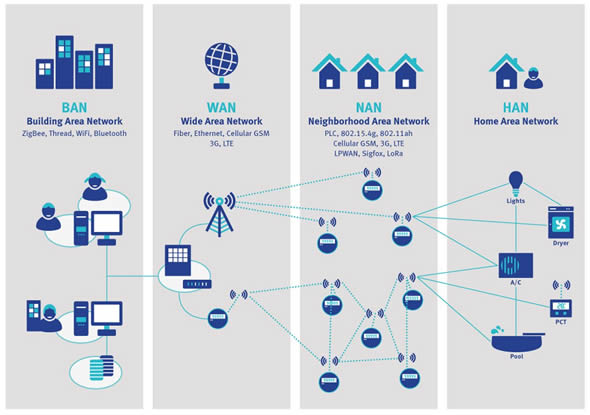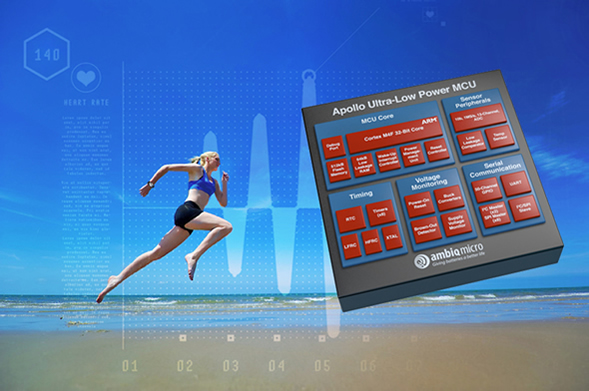Creating the internet of low power things
Reducing power consumption is a major challenge facing the IoT. Steve Rogerson looks at the techniques being employed.
Some extremely large figures have been bandied around for the number of devices that will eventually make up the Internet-of-Things as research companies try to outdo each other in their predictions. Whether the reality will match the forecasts has yet to be seen, but what is certain is that many of these devices will be in remote areas or hard to reach places and will be powered either by energy harvesting or batteries.
At present, there seems to be two major approaches to reducing the power on these devices - trying to design the chip architecture in a way that it uses less power and looking at how these devices operate, and the connected network.
Network
On the network side, cellular and WiFi, while widely available, are not noted for low power consumption. Bluetooth Low Energy has advantages, but one is not range and that can cause problems. And there are various low power WAN technologies, such as LoRa and Sigfox that hold promise for certain M2M applications.
“The most controllable parameter driving energy consumption down is the protocol of the network,” said Hardy Schmidbauer, Head of Marketing at Semtech, one of the backers of the LoRa standard. “Low power wide area networks are driving improvements in battery lifetime.”
A problem with cellular was the devices had to check into the network at regular intervals, and that took a lot of battery life, though he acknowledged the latest work with LTE-M - the LTE network optimised for M2M - was tackling these issues.
“They are extending the synchronisation time from 1.5s to 20s, but that is still worse than can be achieved by low power WANs,” he said. “In something like LoRa the end node can be asleep for days or weeks. That gives significantly longer battery life.”
Randall Restle, Vice President, Applications Engineering at Digi-Key, said the simplest way to save power was to turn the device off when it was not communicating. “There are companies making devices they guarantee will wake-up when they need to,” he said. “You can get by with once a minute or longer. The current to power a clock can be very small. Where the power reduction needed is in the communications.”

How Ceva sees the different technologies being used in IoT applications
Reducing the bandwidth is a good technique to reduce the power, but this also reduces data rate, not a problem for many IoT applications.
“It does mean you can use a less power hungry radio,” said Emmanuel Gresset, Director of Business Development at Ceva. “However, some early standards are only one way because it was thought the devices would only need to send. That is wrong. You always need some kind of downlink. Now, all standards are two way.”
Chip design
Many semiconductor manufacturers are starting to embed wireless technology within the chips or modules, whether it be short range such as Bluetooth Low Energy or a longer range sub-gigahertz transceiver, and then optimising the design for the lowest power. “You don’t want them on all the time, just when they have to do a task,” said Andrew Bickley, Technology Marketing Director at Arrow Electronics. “So you need a deep-sleep mode to turn-off everything apart from a sniffer for when they need to wake-up. You want the wake-up to be quick, do the task and then go back into deep sleep.”
Gresset added: “The goal is to have a single chip that is the complete radio. This has been done with GSM but not yet with LTE. GSM is a great technology but very spectrally inefficient compared with LTE. Every operator wants to reuse their GSM band for LTE. But LTE needs new evolution to support IoT.” He believes a fully integrated chip to support LTE will appear in 2016. This is already available for networks such as Weightless, Sigfox and LoRa.
On processor design widths, Gresset is in favour of using the wider 40nm technology rather than the more modern 28 and 15nm, because the older technology has better leakage characteristics.
“These new expensive processors are very bad at leakage,” he said. “For IoT, you need to go back to higher widths because they have much better leakage figures.” However, while leakage is a problem, even more can be saved by tackling dynamic power consumption, as internal nodes are charged up and down. Ambiq Micro is tackling this by going to an old technology - sub-threshold CMOS techniques, first used in the 1970s by Swiss watchmakers who saw the advantage of using some transistors in the sub-threshold region. This was later adopted for pacemakers and RFID tags, but not much else until now.
This can benefit power saving in an IoT application by moving some power hungry functions into the processor and using sub-threshold techniques. Keith Odland, Senior Director of Marketing at Ambiq Micro, illustrated this with a medical application. “We were working with a customer who had a wearable device measuring health data such as heart rate,” he said. “It would write the data to a flash card. The power used to acquire the data was 1µW but it took 1mW to write to the card, so a thousand times more energy to store the data than to acquire the data.”

Ambiq Micro is targeting its sub-threshold technology initially at the health monitoring wearables market
However, data such as this lends itself well to compression. By using the processor to compress the data ten times took 2µW, which then reduced the amount of time needed to write to the card, resulting in a ten-fold reduction in power consumption.
“We targeted the wearable market first,” Odland said. “They wanted low power - the market is new and fragmented without large incumbents. The people in there are open to change. But it is not the only space. We think our approach can work in any type of microcontroller application.”
Conclusion
There is a long way to go before the dream of the IoT on the scales envisaged will be a reality, but one of the big hurdles is power consumption. Innovative research is pointing the way. Also encouraging is designing systems that allow the end devices to spend large amounts of time in deep sleep mode. Work such as this and developments on the network architecture and protocols suggest this hurdle will be overcome, and in a relatively short time.










